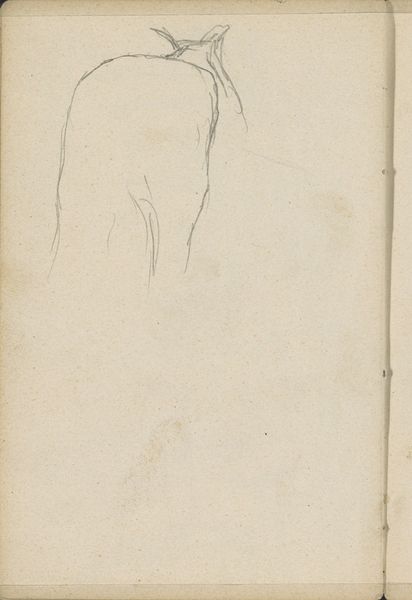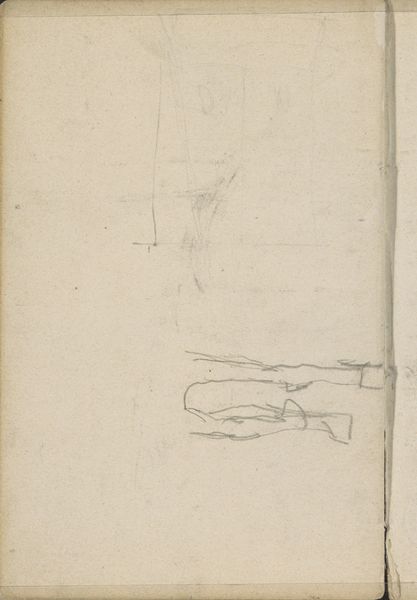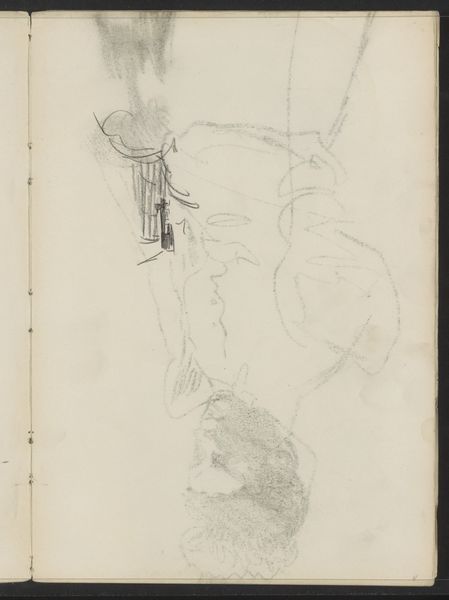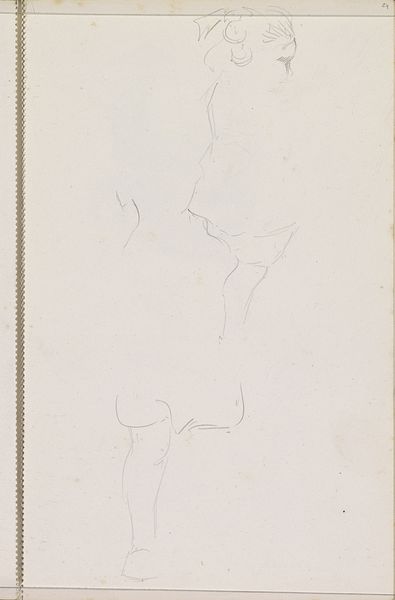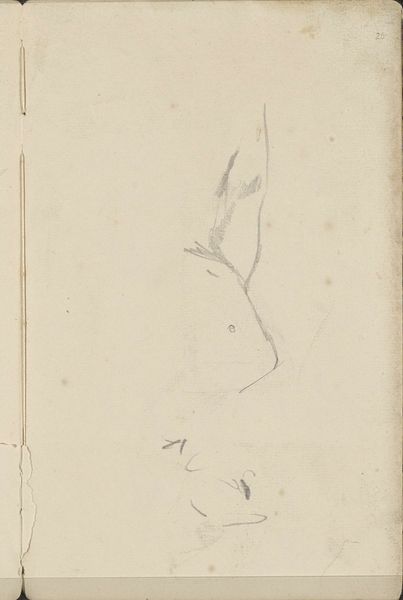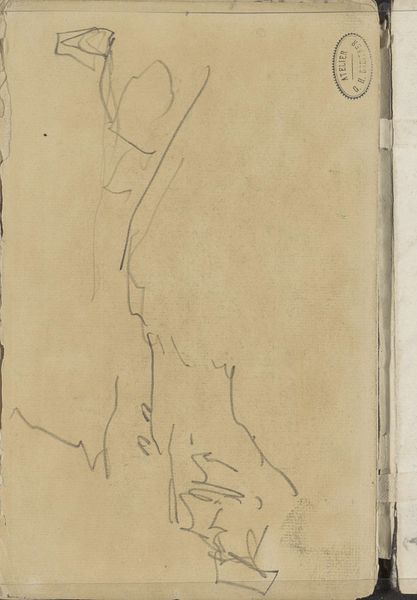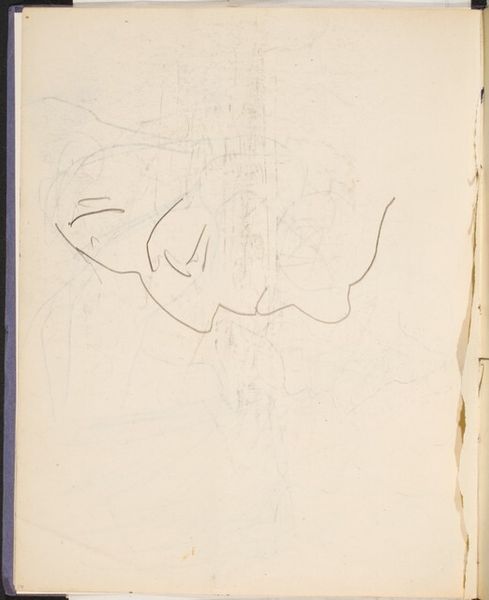
Copyright: Rijks Museum: Open Domain
Editor: Here we have "Abklatsch van de krijttekening op blad 14 recto," a pencil drawing on paper by Isaac Israels, likely created between 1875 and 1934. It feels so preliminary, almost ghostly in its lightness. What strikes you most about it? Curator: I am drawn to the starkness of the materials and the obvious labor involved. The paper itself, the graphite – these are relatively common, industrially produced goods even for that time. Israels’ choice to use them, rather than, say, oils on canvas, speaks volumes about his engagement with the everyday. Do you see how the "impression" referred to in the title reveals its nature as a mechanical reproduction, a copy? Editor: Yes, now that you mention it, "Abklatsch" suggests a transfer or rubbing, so it is, as you said, a reproduction rather than a spontaneous drawing. How does that relate to his artistic intentions? Curator: It positions this work in an interesting place concerning originality and authenticity, which were important concepts at the time. The reproductive nature of the work questions the very role of the artist. He's not necessarily creating something entirely new, but rather mediating, reinterpreting through a specific manual process. Editor: So, even in what appears to be a simple sketch, we find questions about production, value, and originality being subtly raised through the very choice of material and process? Curator: Precisely. And consider where it was intended to exist. If this drawing existed as part of an intimate notebook used as study material, it tells us something of Israels' artistic method in its initial material format. Editor: That really reframes my perspective. I initially saw a quick study, but now I see an engagement with ideas about artistic production and the value we assign to different types of labor. Thank you! Curator: Indeed! Examining the materiality opens doors to richer, more nuanced readings.
Comments
No comments
Be the first to comment and join the conversation on the ultimate creative platform.


